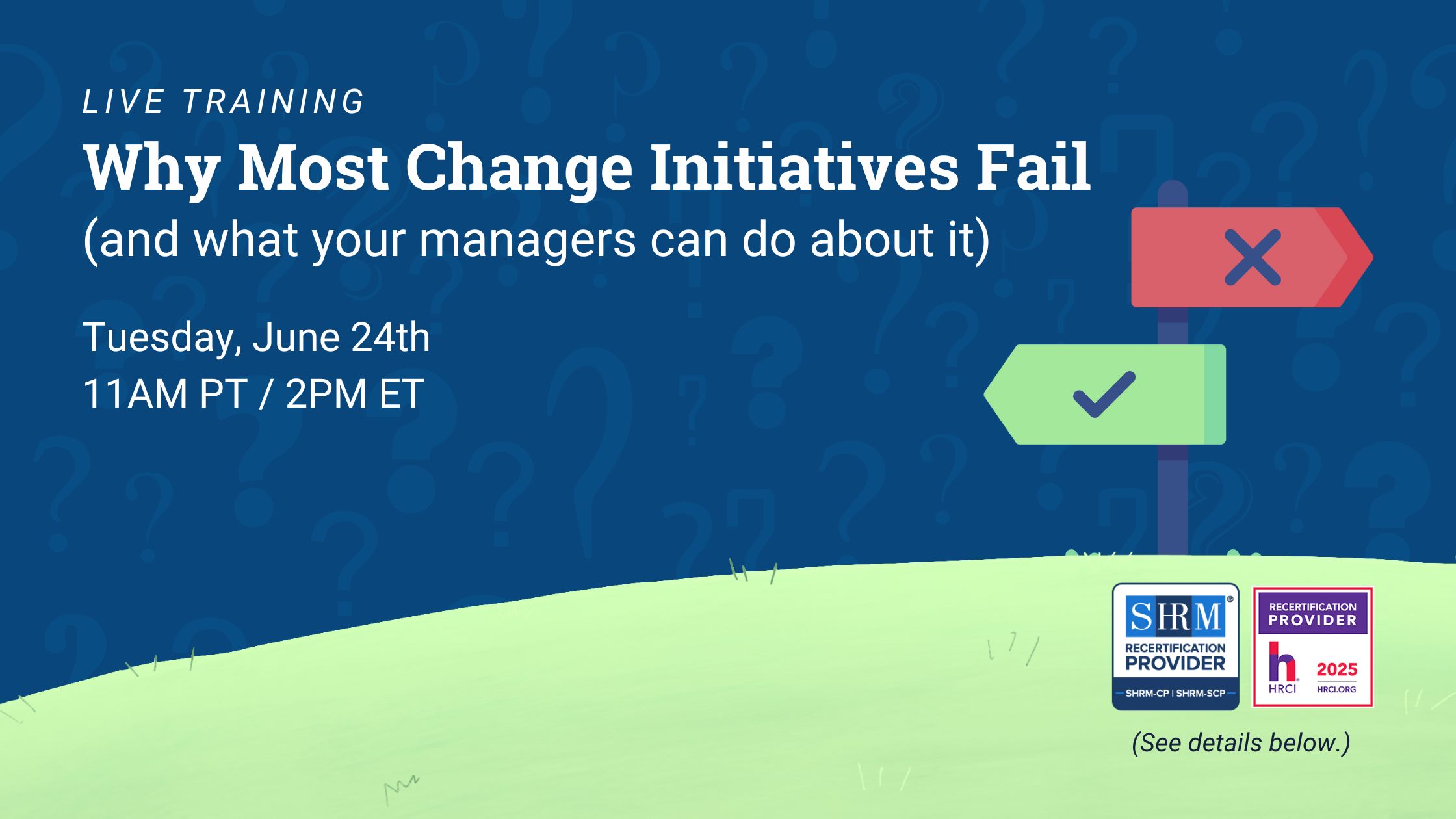While mergers often make great business sense, they also bring up fears about pending layoffs for employees. Those fears aren’t unfounded and you may find yourself managing layoffs during a merger. Harvard Business Review reports “on average, roughly 30% of employees are deemed redundant after a merger or acquisition in the same industry.”
As an HR professional, should your company go through a merger, you’ll likely be one of the key people responsible for juggling the many different duties that come with managing layoffs and downsizing—from following legal guidelines to providing a smooth offboarding experience for exiting employees. Here are five best practices for managing layoffs that occur due to a merger.
1. Communicate honestly
During a merger, it’s important to share with employees up-to-date information about business decisions that are being made, even if all the details haven’t been nailed down. According to Adam Hickman, a learning design consultant at Gallup, “when managers tell anxious teams that they don’t know what to expect, employees assume the manager’s lying, which destroys trust—or employees fear she’s already been cut out of the loop and everyone’s days are numbered.”
HR professionals can work with company leadership to develop a communications plan that allows managers to inform employees about business decisions that may affect them as soon as possible. The layoff process—including how the people to be laid off were selected—should be fair and transparent, according to Knowledge@Wharton. Consistency and clarity help preserve a positive company culture, especially for the employees who remain after a merger.
2. Address legal concerns
A reduction in force requires you to address a broad array of legal concerns. On top of following federal and state labor laws, you must honor any agreements your company has with unions. You also need to make sure you abide by the company employee handbook, as well as stipulations in individual employee contracts.
Key legal considerations include:
- Worker Adjustment and Retraining Notification (WARN) Act. This act requires companies with 100 or more full-time employees to give written notice 60 days before the date of a mass layoff. Some states have more stringent requirements, so check with your state department of labor.
- Equal Employment Opportunity Commission (EEOC) regulations. Federal laws prohibit employment discrimination based on “race, color, religion, sex (including pregnancy, gender identity, and sexual orientation), national origin, age (40 or older), disability or genetic information.” The EEOC recommends looking over your company’s list of employees to be laid off to make sure certain groups aren’t affected more than others—and adjusting the list as necessary.
- Age Discrimination in Employment Act (ADEA). While the ADEA prohibits employment discrimination against employees over 40 in general, the act also gives older employees extra time to review severance agreements. Employees over 40 are entitled to at least 21 days to review a severance agreement if terminated individually; they are entitled 45 days if terminated as part of a larger layoff.
- State laws regarding final paychecks. In some states, employers are required to provide employees with their final paycheck on their final day of work. In addition, your company may be required to compensate departing employees for unused vacation or sick days. Check with your state’s labor department to find out what laws affect your company.
3. Plan and conduct layoff meetings
Once your company has determined which employees will be laid off, plan layoff meetings that allow you to break the news to affected employees in a compassionate manner that protects their dignity. Preparation is key. Prepare a script for yourself so you don’t miss any important details you need to cover when meeting with the employee. For a sample script, download INTOO’s Layoff Notification Guide.
The Layoff Notification Guide also includes a handy pre-notification checklist. As the HR professional, you’ll be responsible for gathering many of the items needed for layoff meetings, such as the layoff notice letter, information about severance packages, and final paycheck. Make sure to have these necessary materials on hand before starting the meetings.
One of the most important duties you’ll perform during a layoff meeting is serving as a caring and kind representative of your company. Employees can react with negative reactions when they hear they’re being laid off—and you need to be prepared to handle them. Intoo’s webinar, Compassionate Offboarding: How to Manage Layoffs with Empathy and Dignity, offers important advice on managing a layoff meeting with empathy and dignity.
4. Offer a severance package and outplacement services
While severance packages are not required by law, many companies offer them when managing layoffs to reduce the risk of litigation and protect brand reputation.
A severance package generally includes severance pay and other benefits, such as health benefits, stock options, and outplacement services. To receive the severance package, employees are usually asked to sign a severance agreement—also called an employee termination agreement. By signing, employees agree not to sue the company or ask for additional severance benefits.
Outplacement services are an especially important benefit to include in severance packages. Although some companies may feel awkward about encouraging laid-off employees to think about looking for new jobs, this is an important step in managing layoffs. “Leaders can provide outplacement services or invite job recruiters to set up tables in the lobby, uncomfortable as that may feel,” Hickman says.
Outplacement services help exiting employees find new jobs more quickly by providing them with career transition assistance such as career coaching and resume reviews. Departing employees are then better able to focus on new career opportunities instead of the anxieties surrounding the layoff itself. While few employees are happy to be laid off, they are more likely to positively regard a company that provides them with valuable and practical career assistance in the aftermath. This helps companies protect their brand reputation and reduce the cost of unemployment claims.
5. Focus on remaining employees
After layoffs, company morale can often suffer. Remaining employees may be sad or upset about the business decisions that were made, or worried that they too will be let go in a future round of layoffs.
To address these issues, the Wall Street Journal recommends keeping communication channels open: “Don’t shy away from uncomfortable meetings with workplace survivors. Tell them how the layoffs will change their existing duties or shift department structures…. Remaining employees will be spooked if they spot several closed-door meetings. When possible, tell them what was discussed during management meetings.”
__
Many of the potential negative impacts of a layoff on company culture can be mitigated by a well-managed process that treats all employees—including those leaving the company—with respect and care. An outplacement program can serve as a key tool that helps exiting employees find new positions while protecting the positive culture and brand reputation of a company.
Intoo’s outplacement solution offers comprehensive career transition services—including on-demand virtual coaching from premier career counselors and in-depth resume reviews. Learn more about how our outplacement services can help your company manage its layoff process.











